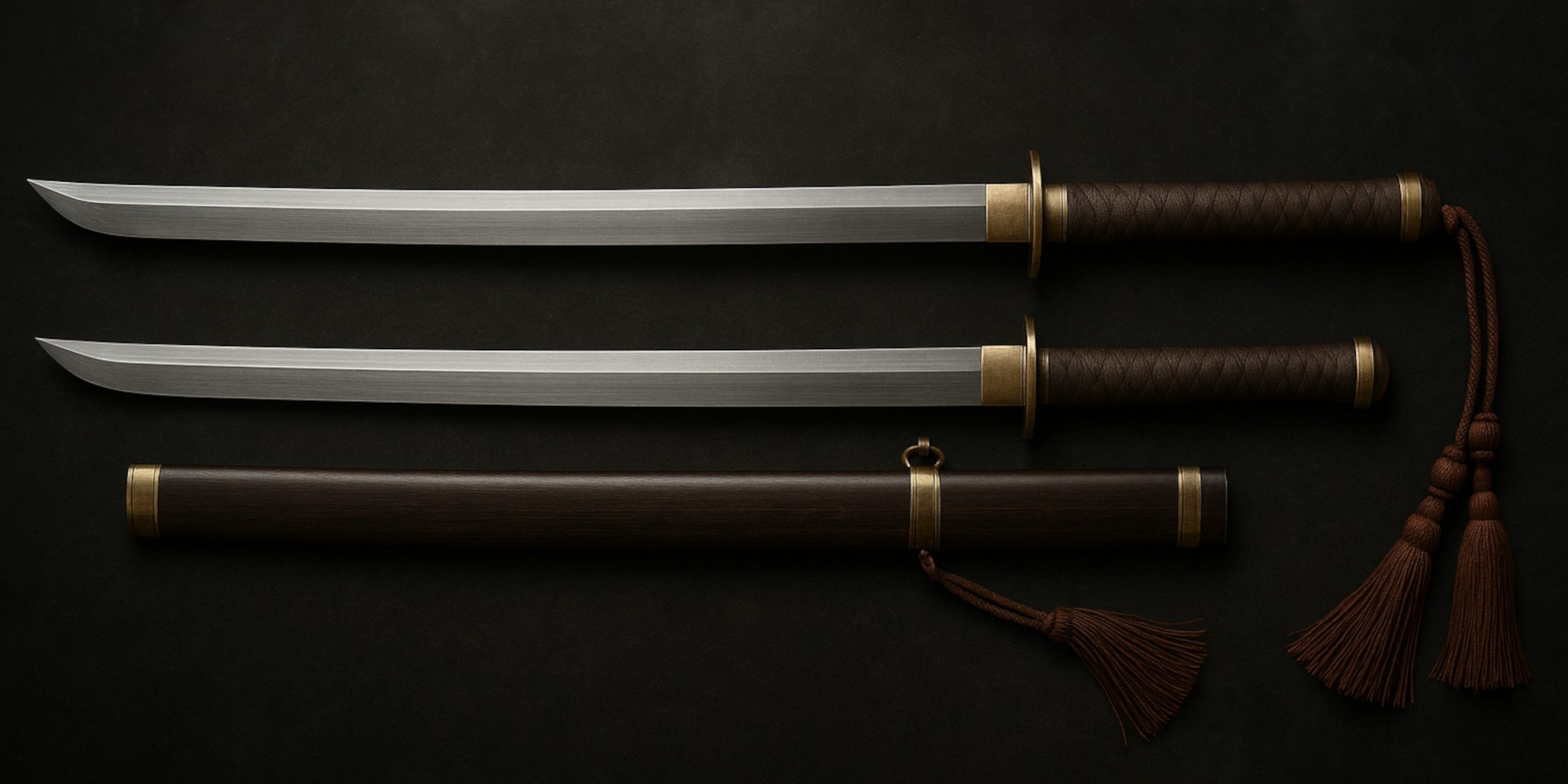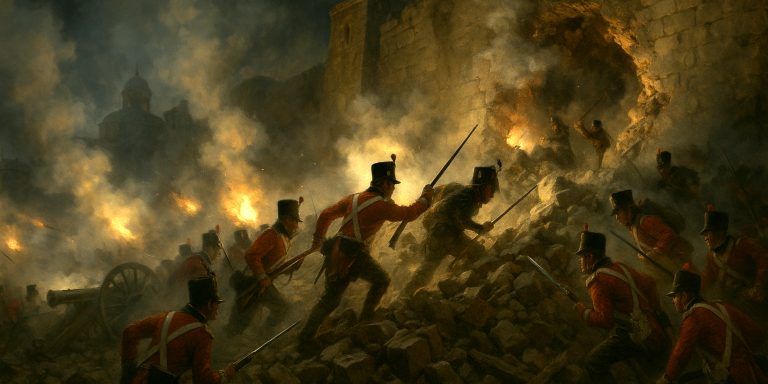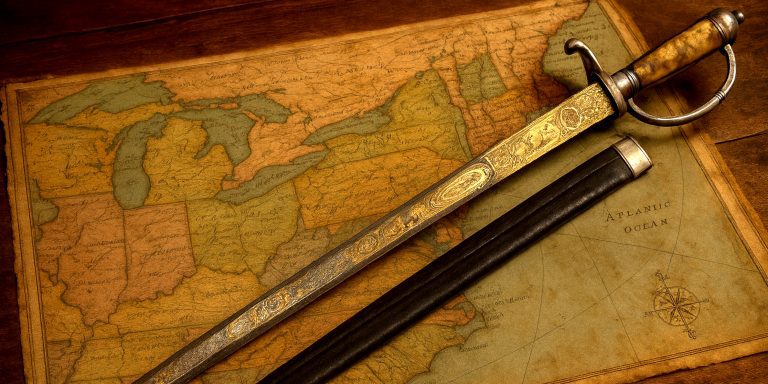
Historical Context and Development
The Ssangdo (쌍도), translating as “twin swords,” emerged during Korea’s Joseon Dynasty (1392–1897) as a specialised weapon system for elite warriors and martial practitioners. Unlike the more widely documented single-edged geom or curved hwando, these paired swords represented a refined martial tradition that balanced combat effectiveness with ceremonial significance.
Physical Characteristics and Construction
Blade Specifications
- Length: Each blade typically measured 60–80cm (24–31 inches)
- Profile: Straight or minimally curved single-edged design
- Construction: Traditionally forged from high-carbon steel, sometimes featuring patterned laminations
- Weight: Balanced for coordinated dual-wielding (approx. 700–900g per blade)
Hilt and Mountings
- Handle: Wood or horn core, often wrapped in cord or ray skin (samegawa)
- Guard: Minimalist design to facilitate fluid transitions between offensive and defensive postures
- Scabbard: Wooden construction with lacquered finish, designed for simultaneous or side-by-side carry
Martial Application and Techniques
The Ssangdo’s combat methodology emphasised:
- Simultaneous defence and offence: Unlike single-sword systems that alternate between blocking and striking
- Circular footwork: To maintain balance while executing complex blade movements
- Close-quarters engagement: Particularly effective against multiple opponents
Historical records from the Muyedobotongji (1790) illustrate similar dual-sword techniques (Ssanggeom), though direct references to Ssangdo remain scarce. This suggests the weapons may have been specialist implements rather than standard military issue.
Comparative Analysis with Regional Counterparts
| Weapon System | Origin | Key Distinctions |
|---|---|---|
| Shuangjian | China | Paired straight jian with double-edged flexibility |
| Daishō | Japan | Asymmetrical katana/wakizashi pairing for different ranges |
| Butterfly Swords | Southern China | Compact blades optimised for confined spaces |
| Ssanggeom | Korea | Possibly synonymous with Ssangdo in martial context |
Cultural Significance and Evolution
During the Joseon period, these weapons transitioned from practical combat tools to symbols of martial prestige. Their use became associated with:
- Royal guards: Particularly those protecting the palace interior
- Martial examinations: As demonstration weapons for advanced practitioners
- Ceremonial displays: During important court events
The late 19th century saw their gradual obsolescence due to:
- Firearms proliferation during the Korean Empire period
- Modernisation of military training systems
- Shifting cultural attitudes toward traditional weaponry
Preservation and Modern Practice
Contemporary interest in Ssangdo manifests through:
- Historical European Martial Arts (HEMA) adaptations: Where practitioners reconstruct techniques from analogous systems
- Korean traditional martial arts: Particularly in geomdo (검도) schools preserving Joseon-era forms
- Cultural heritage demonstrations: At venues like the Korean Folk Village in Yongin
Authentication and Collecting Considerations
For historians and collectors, key evaluation points include:
- Metallurgical composition: Authentic examples show traditional forging patterns
- Proportional harmony: Between paired blades (within 3% weight variance)
- Mounting materials: Consistent with Joseon-period craftsmanship
Notable collections featuring Ssangdo or related weapons:
- National Palace Museum of Korea (Seoul)
- War Memorial of Korea (Yongsan-gu)
- Andong Hahoe Folk Museum (preserved martial arts artefacts)
Practical Study and Reconstruction
Modern martial artists attempting to reconstruct Ssangdo techniques face particular challenges:
- Limited primary source material compared to Japanese kenjutsu or Chinese jian systems
- Need to extrapolate from single-sword Joseon geom techniques
- Physical demands of sustained dual-wielding combat
Leading researchers like Kim Kwang-seok (Korean Swordsmanship Research Institute) have published comparative studies analysing possible training methods through surviving 18th-century military manuals.
Between History and Reconstruction
The Ssangdo represents both a tangible historical artefact and a conceptual challenge for martial scholars. Its exact role in Joseon combat systems remains partially obscured by time, yet its legacy persists as:
- A technical benchmark for advanced Korean swordsmanship
- A cultural icon representing Joseon martial refinement
- A focus for ongoing historical research and martial reconstruction
For those seeking deeper understanding, hands-on study with qualified instructors and examination of period artefacts (where accessible) offers the most reliable path to appreciating these sophisticated paired weapons.



